Maintenance of fiber optic welding machines
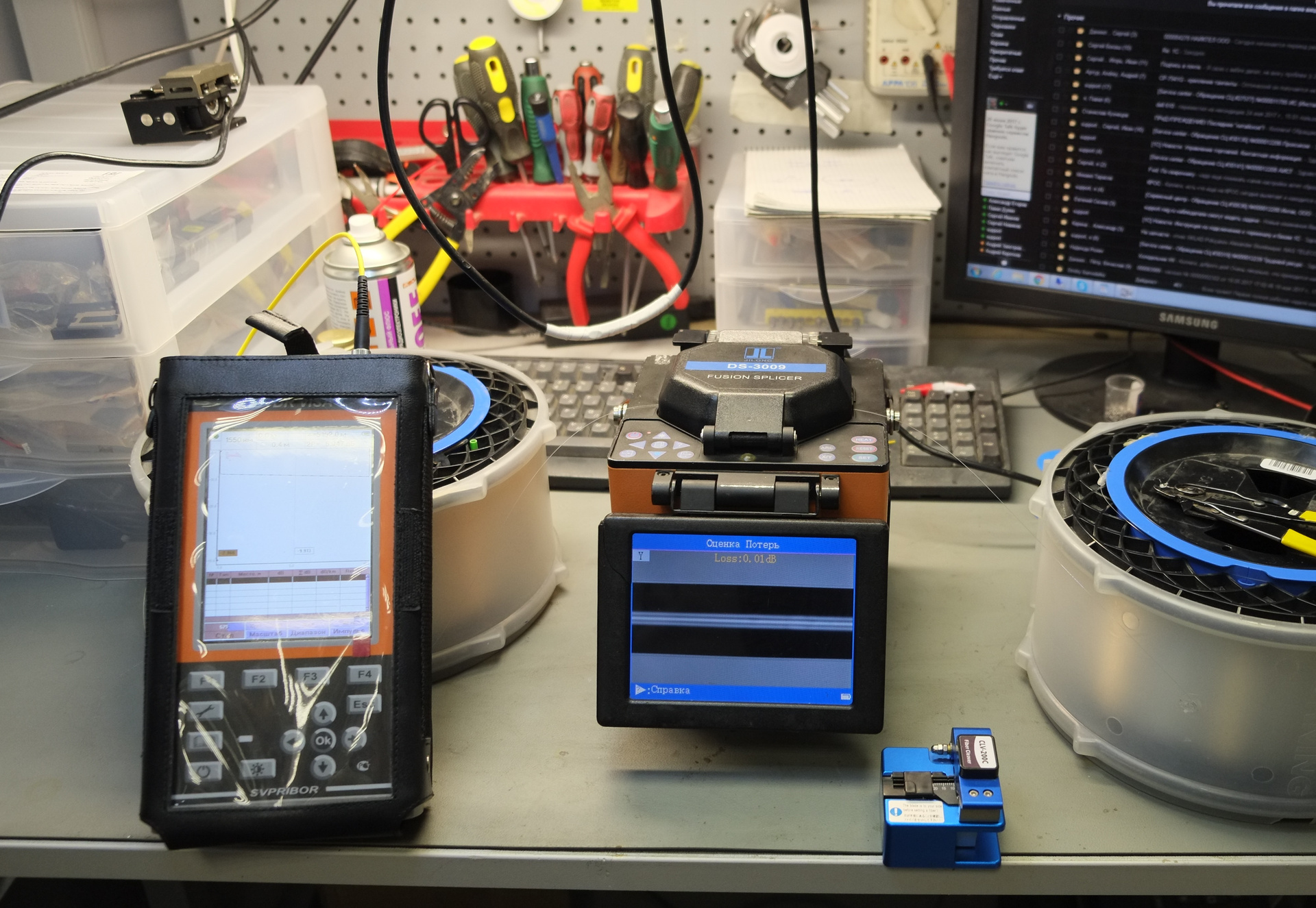
We continue to broadcast from the fields of our service center. This time we will talk about the maintenance of the apparatus for welding fiber-optic cable. Under the cut about the entire inside story and the nuances of servicing such complex devices from the first mouth.
Optics welding is a rather complicated and high-tech process, during which optical fibers are welded to each other using high temperature. The welding of optical fibers is carried out using special devices - welding machines for welding optical fibers.
The welding machine for optical fibers - one of the most difficult and expensive tools of the VOLS assembler. This device allows in the automatic mode to ensure the process of information (adjustment) and welding of fibers with the subsequent fixation of the welded fiber in the KZDS sleeve to prevent its breakage. On how well and quickly the welding machine works, what additional functions and options it has - the speed at which the fiber optic line goes into operation directly depends.
One of the most effective and easiest ways to achieve high quality welding and a long life of a welding machine is proper operation, keeping the machine clean, and most importantly, timely maintenance of the welding machine.
In order to ensure uninterrupted operation, the welding machine should be regularly checked and routine maintenance should be carried out at least once every six months or every 1500 welds.
In general, maintenance of the welding machine includes several steps:
• Comprehensive diagnostics of the technical condition;
• Cleaning the device and its components outside and inside;
• Setting the key blocks and components of the welding machine;
• Adjustment of a large number of parameters that ensure high-quality and proper operation of the welding machine;
• Adjustment of the optical system;
• Replacement of electrodes (if necessary);
• Final check on the compliance of the device with the declared technical characteristics and compliance of the quality of welding with the passport requirements using an OTDR;
Consider each of the stages of maintenance in more detail on the example of one of the real cases.
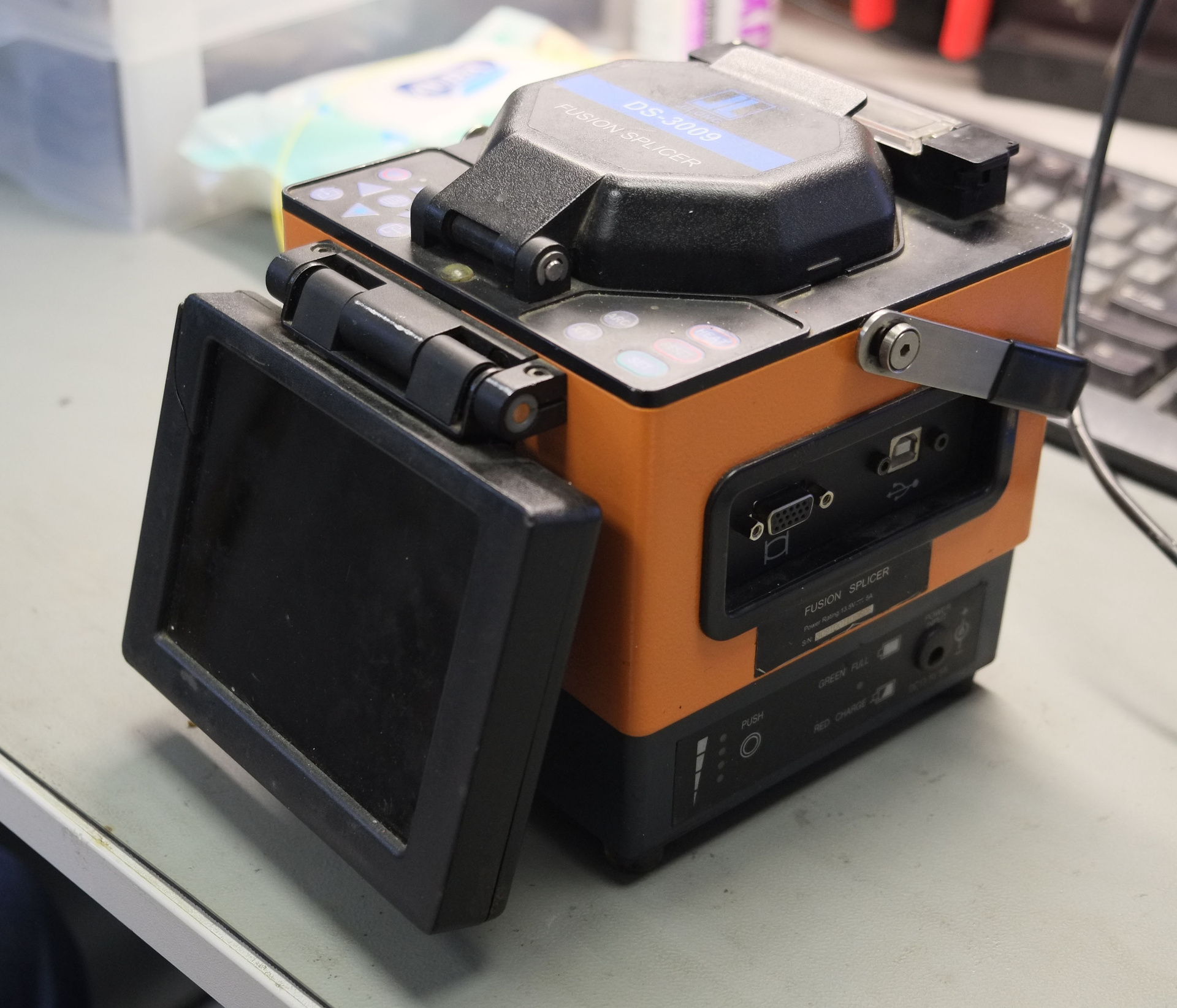
After the welding machine gets to the table to the engineer, a detailed and detailed inspection of the device is carried out to determine the current technical condition of the equipment. Also, the main units of the device are examined for contamination.
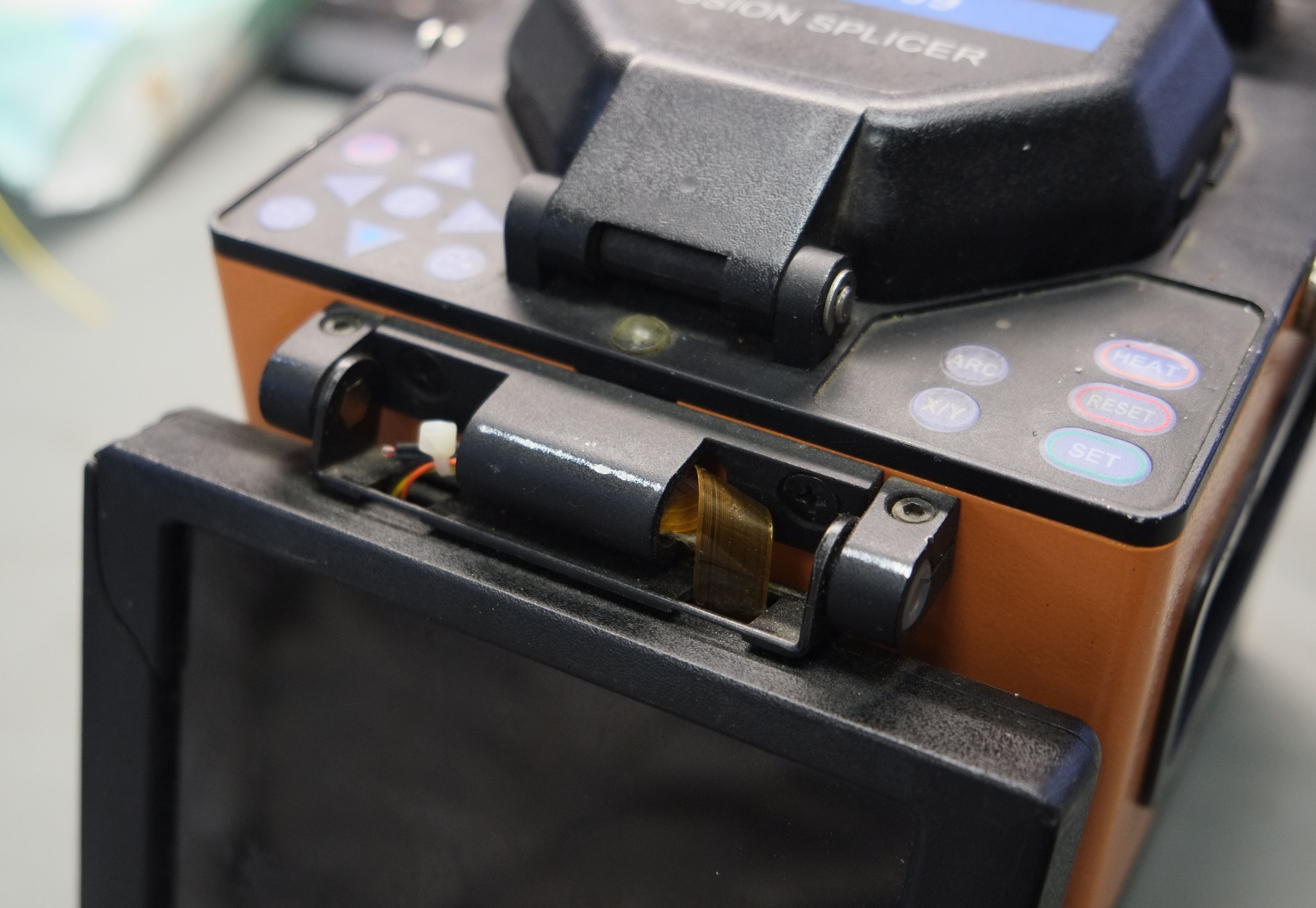
Immediately during the external inspection, we saw that the equipment has strong external contamination, there are also no display bracket covers. Their absence can cause accidental damage to the display plume.
Having finished the external inspection, we proceed to inspect the internal components and components of the device: we detect contamination of the adjustment mechanism, V-shaped grooves, the optical system and mirrors.
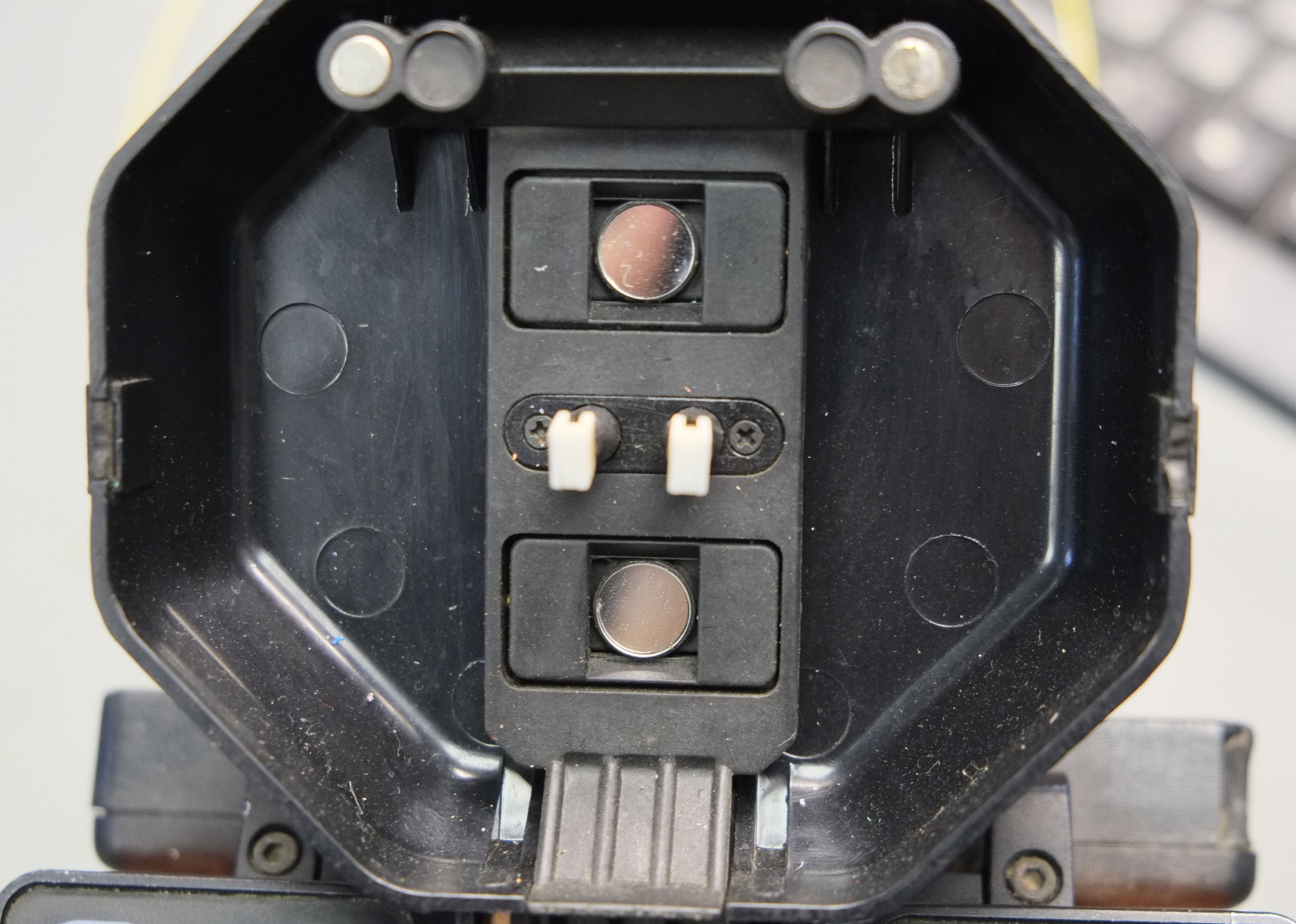
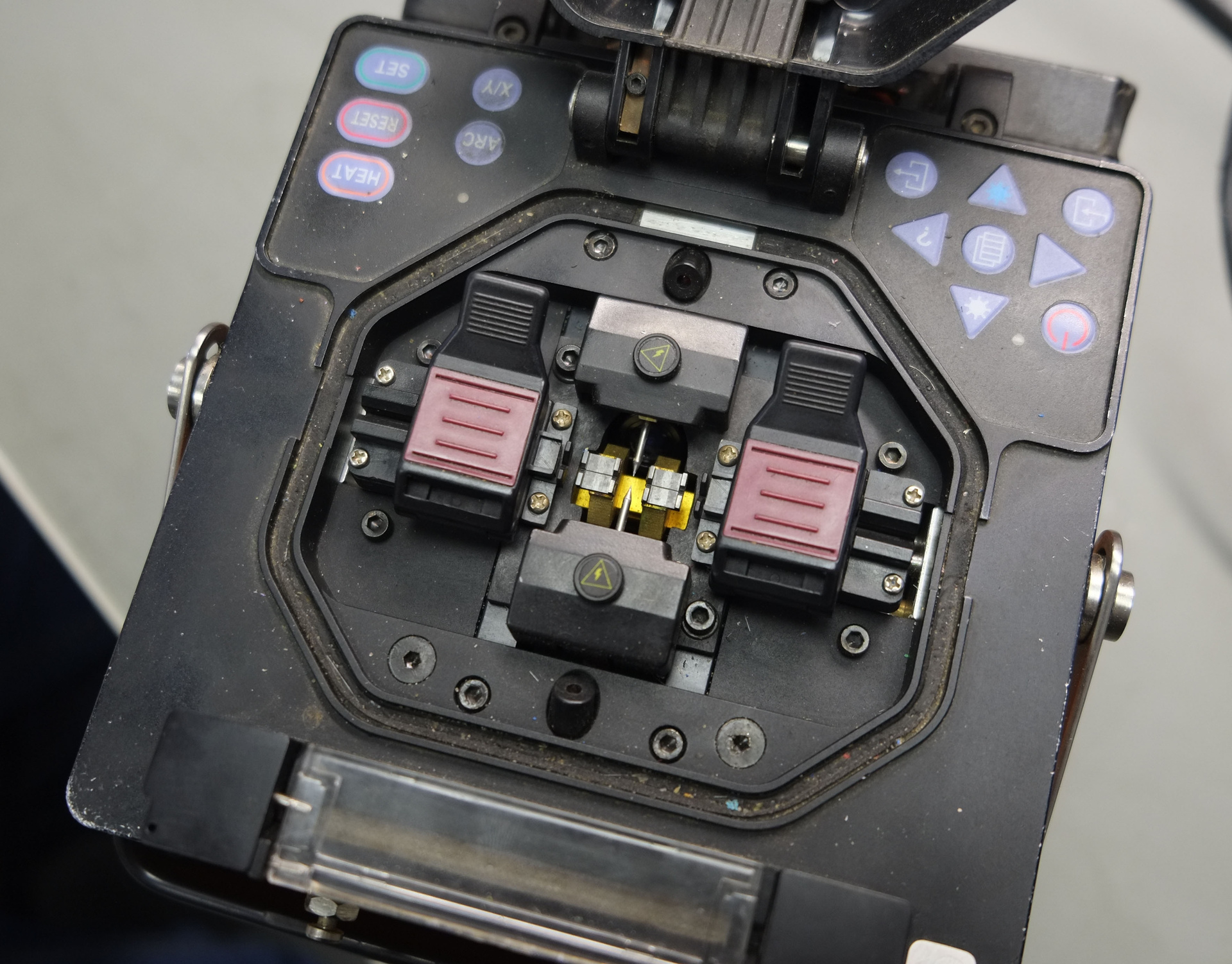
After evaluating the external and internal state of the apparatus, it is necessary to carry out a software diagnostics of the optical system for the presence of dust. The welding machine can diagnose and analyze the current state of the optical system, highlighting all extraneous objects.


In our case, we saw that there was dust on the Y-projection matrix. This significantly affects the quality of welding and the reliability of the estimate of losses at the weld. If you do not carry out timely cleaning and maintenance of the welding machine, the lenses of the optical system may become completely unusable for normal operation and may need to be replaced. In the photo is an example of a dirty lens.
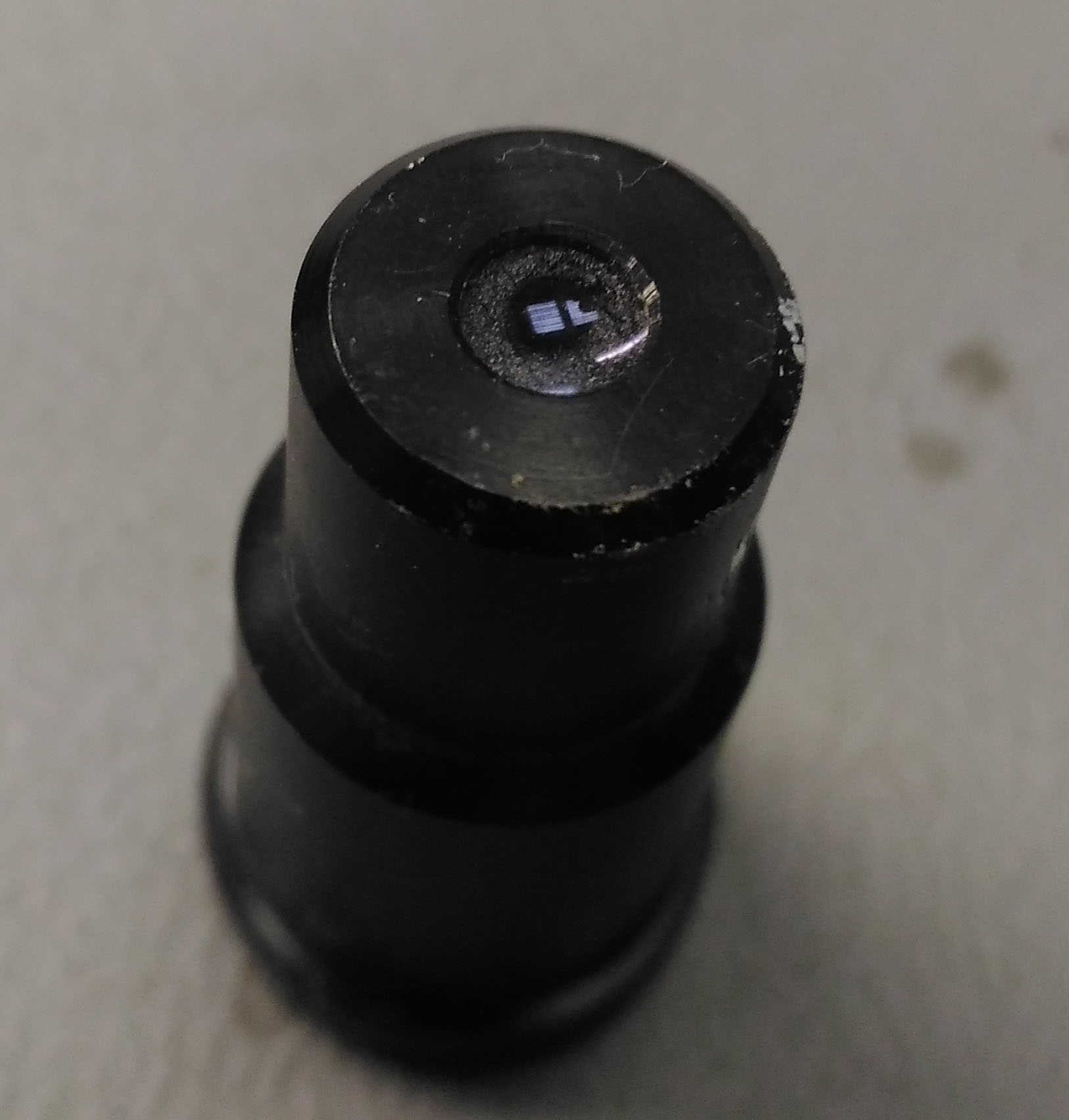
To get to all the key components of the welding machine and carry out a comprehensive cleaning, the setting must be disassembled: remove the battery, the casing of the welding machine.


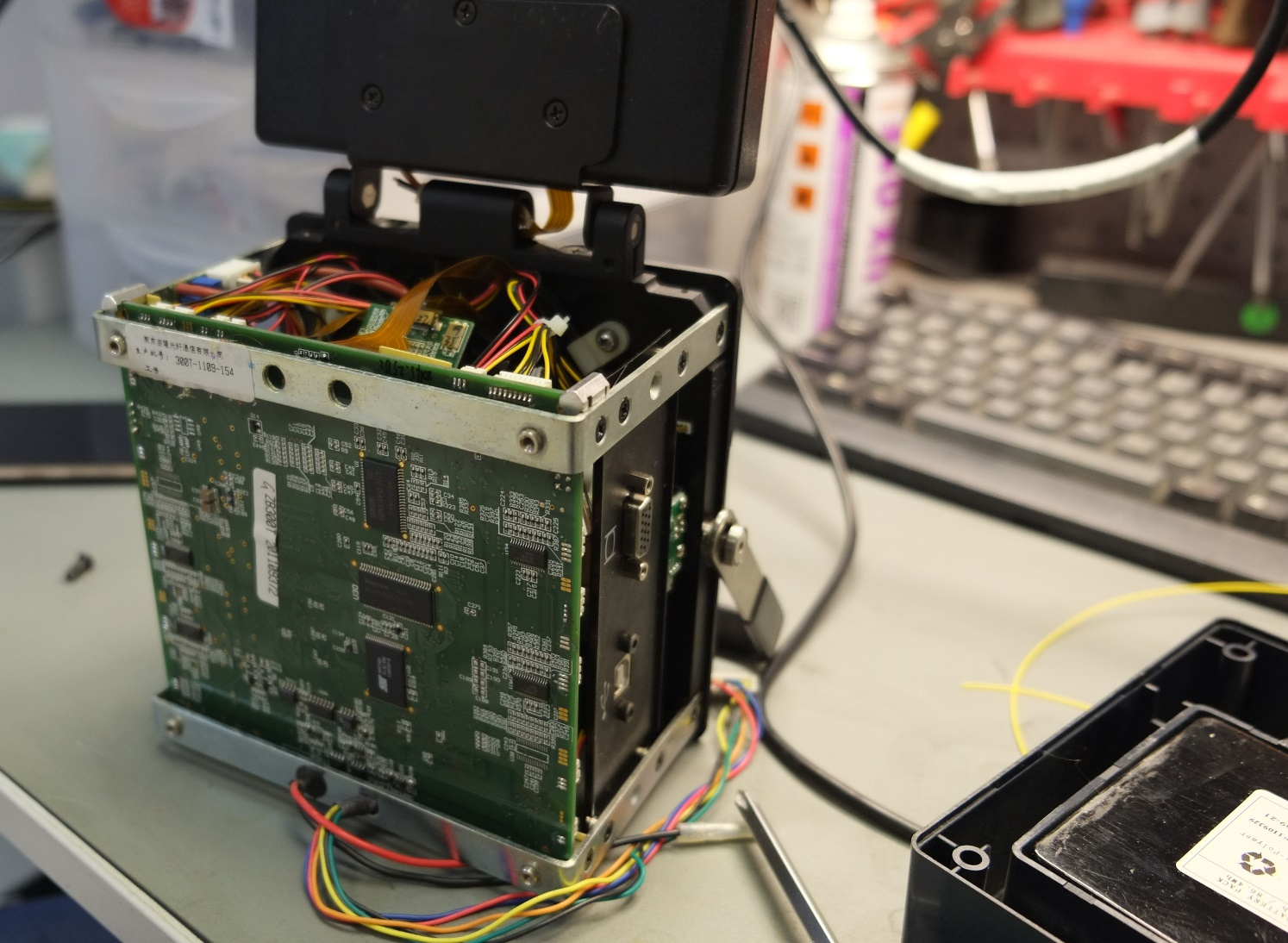

To clean the optical system, it is also necessary to remove the clamping clamps for the optical fiber and the platform for the electrodes.

By removing these components, we get full access to the optical system for cleaning and bringing all units to a suitable condition.


To begin with, we remove all the dust and dirt with a powerful directional jet of air. After using specialized tools, remove all dirt from the main work area. Our device takes a completely different look.
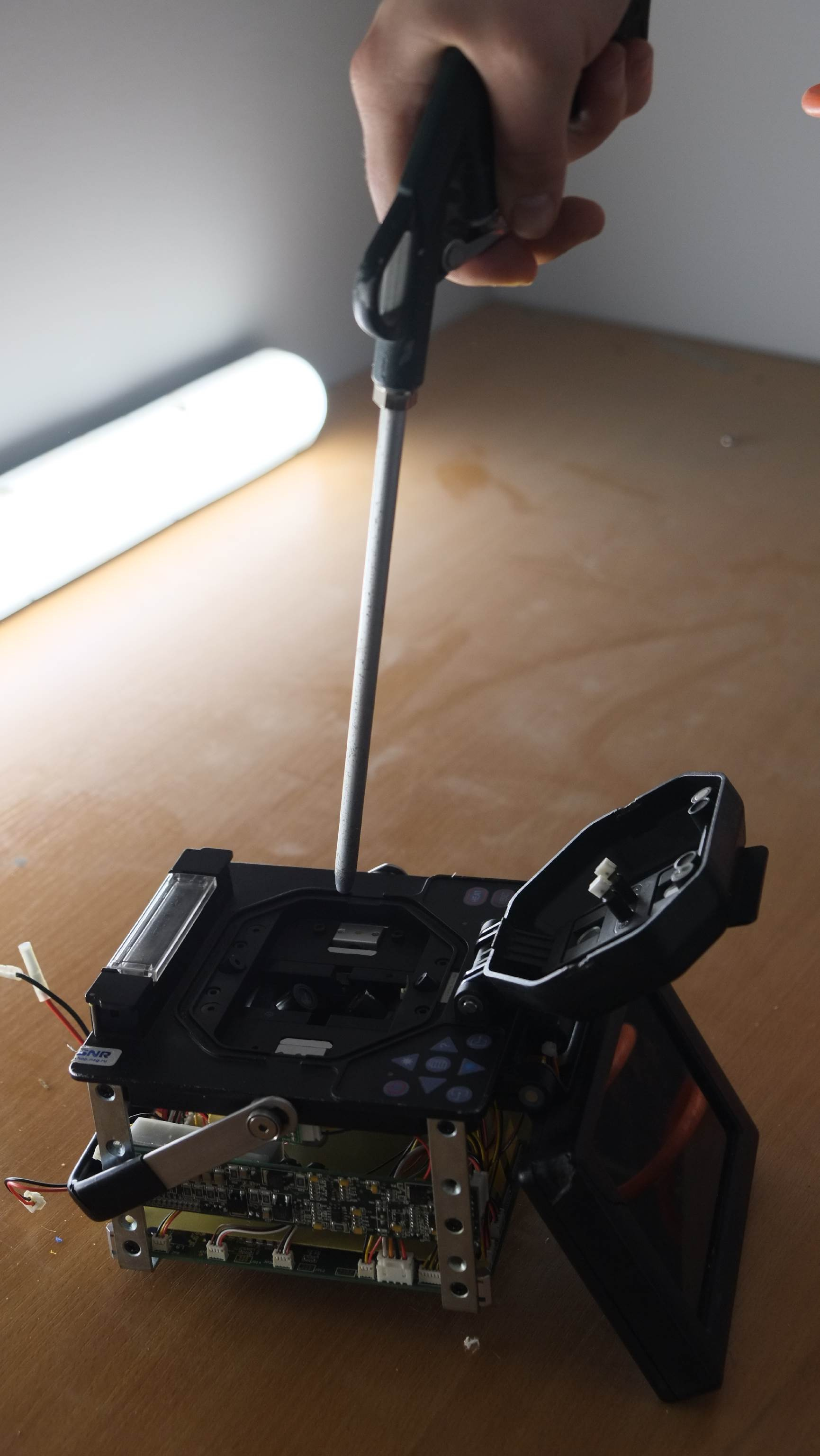
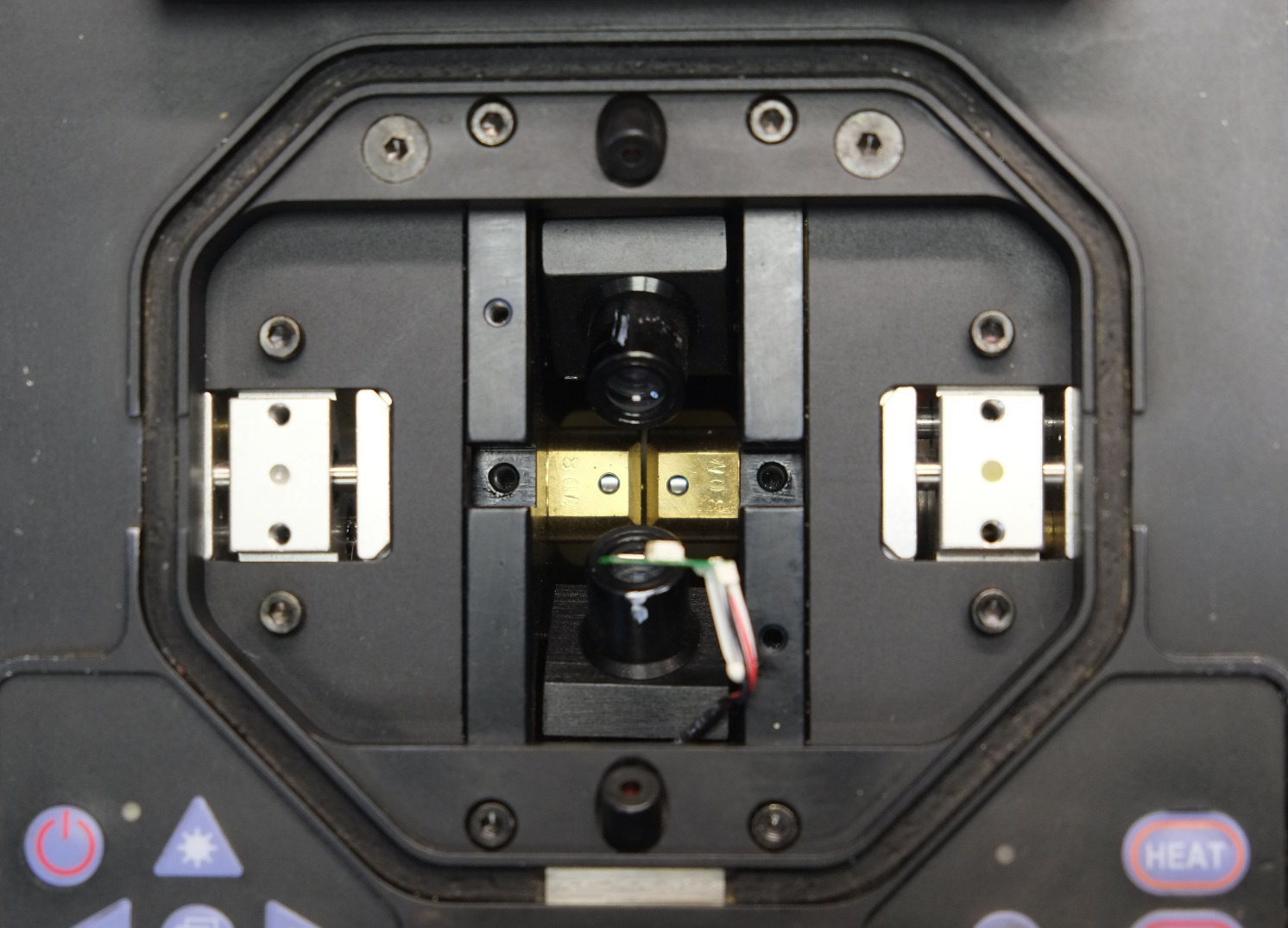
We diagnose the state of the optical system with a microscope. Inspect the microscope lens for damage and dirt. We carry out a fine cleaning of the surface of optical lenses, mirrors and the surface of the matrices X and Y projections.


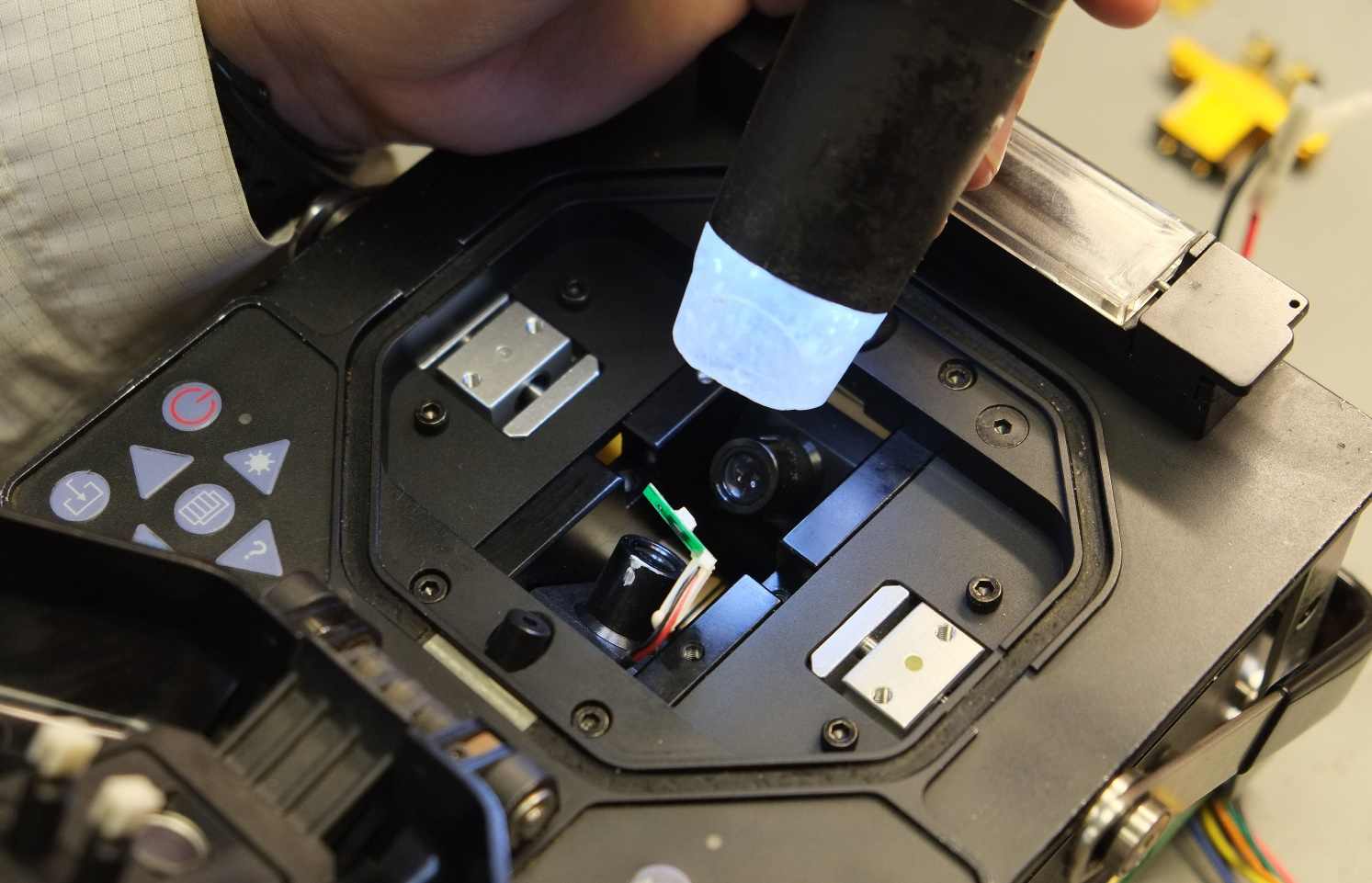
As you can see in the photo, the adjustment mechanism and the V-grooves are heavily soiled. In the current conditions about any quality mixing of the fiber is out of the question. We proceed to cleaning the mechanical components of the welding machine.

Clean V-grooves.
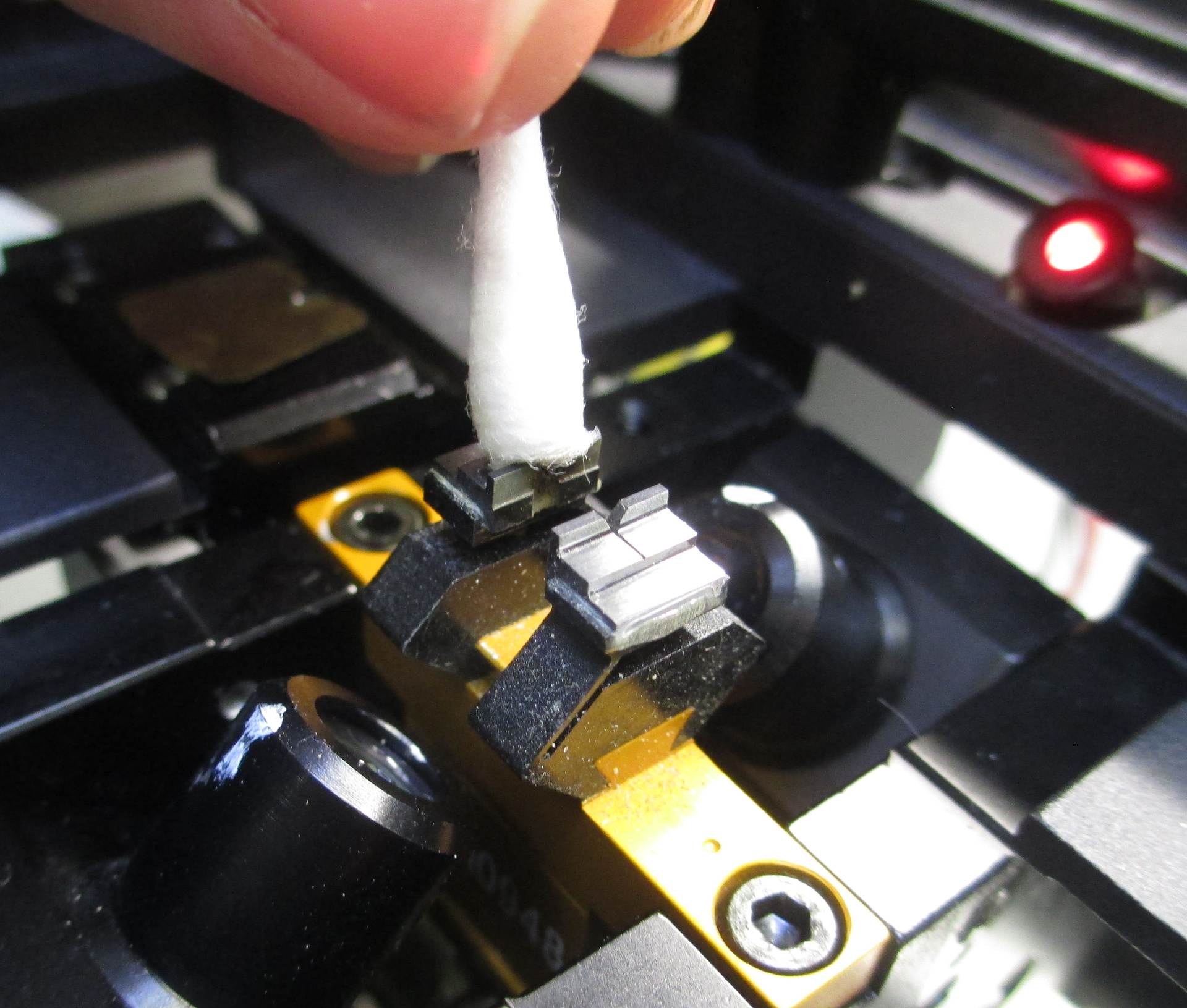

After the main blocks of the welding machine are cleaned, you can proceed to focusing the optical system. To do this, it is necessary to assemble the welding machine back and prepare it for fine tuning.
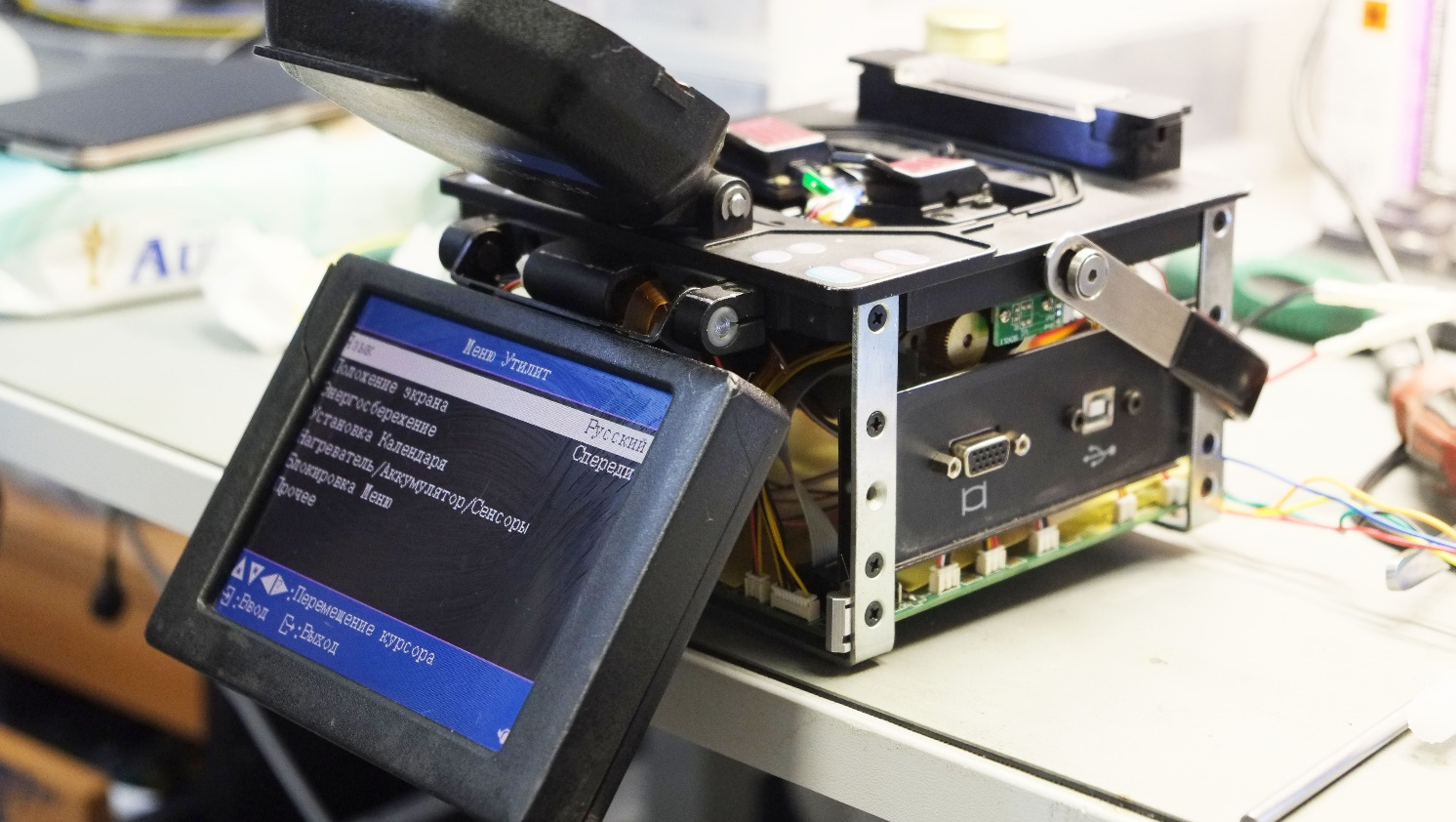
Virtually every welder has an analyzer built in that can be used for fine focusing using a diagnostic chart. In this case, the optical system on the right projection is defocused and the diagram has an irregular shape. If the focusing device does not meet the requirements - the device will not be able to properly reduce the fibers.
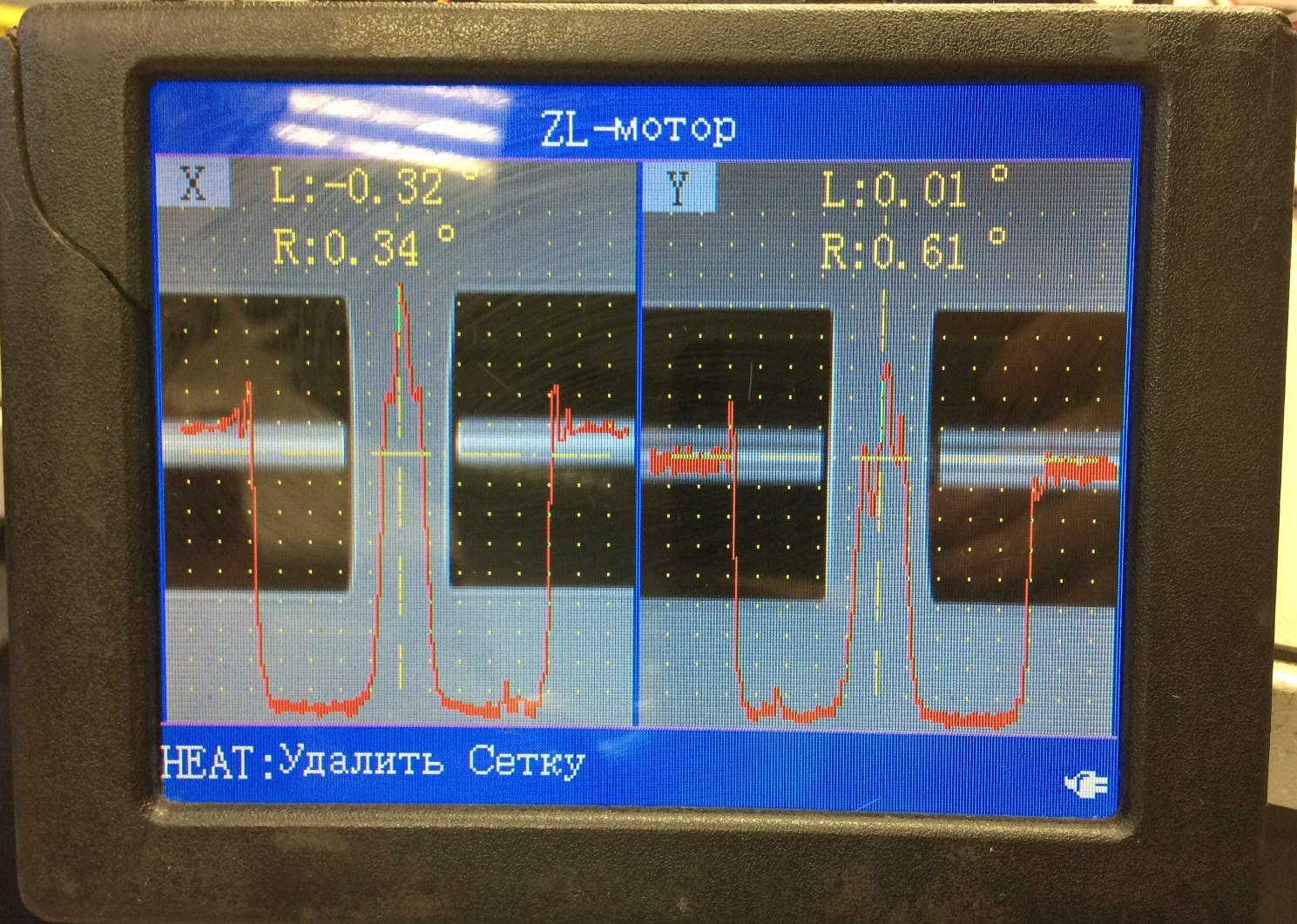

After focusing, the diagnostic diagram takes the form as close as possible to the reference one. At this point, the focusing process ends. Moving on to the software configuration process. To do this, select the welding mode Auto SM, since G652D standard fiber is used for tuning.
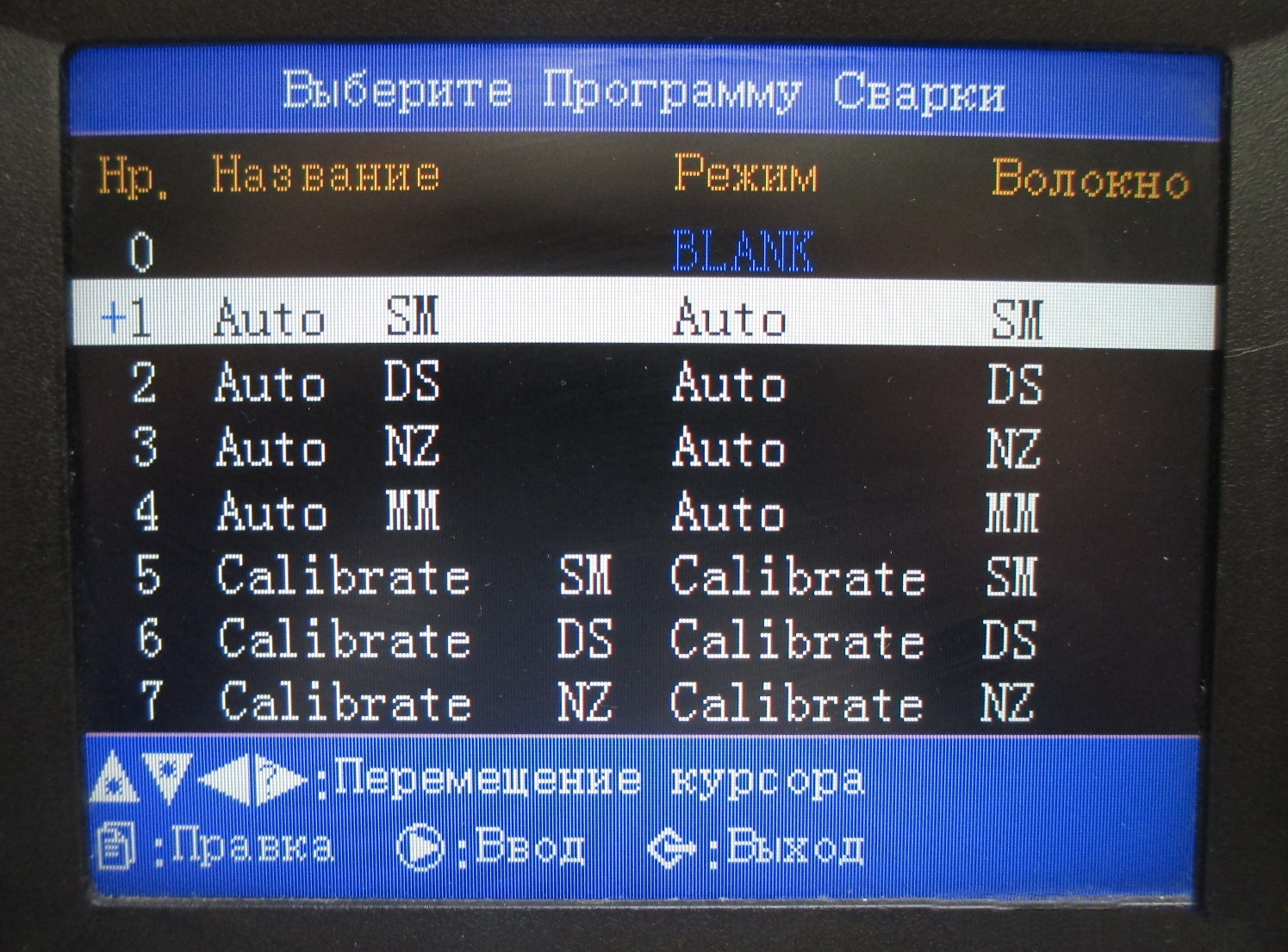
We proceed to the process of calibration of the arc, during which the parameters are adjusted: position and current.
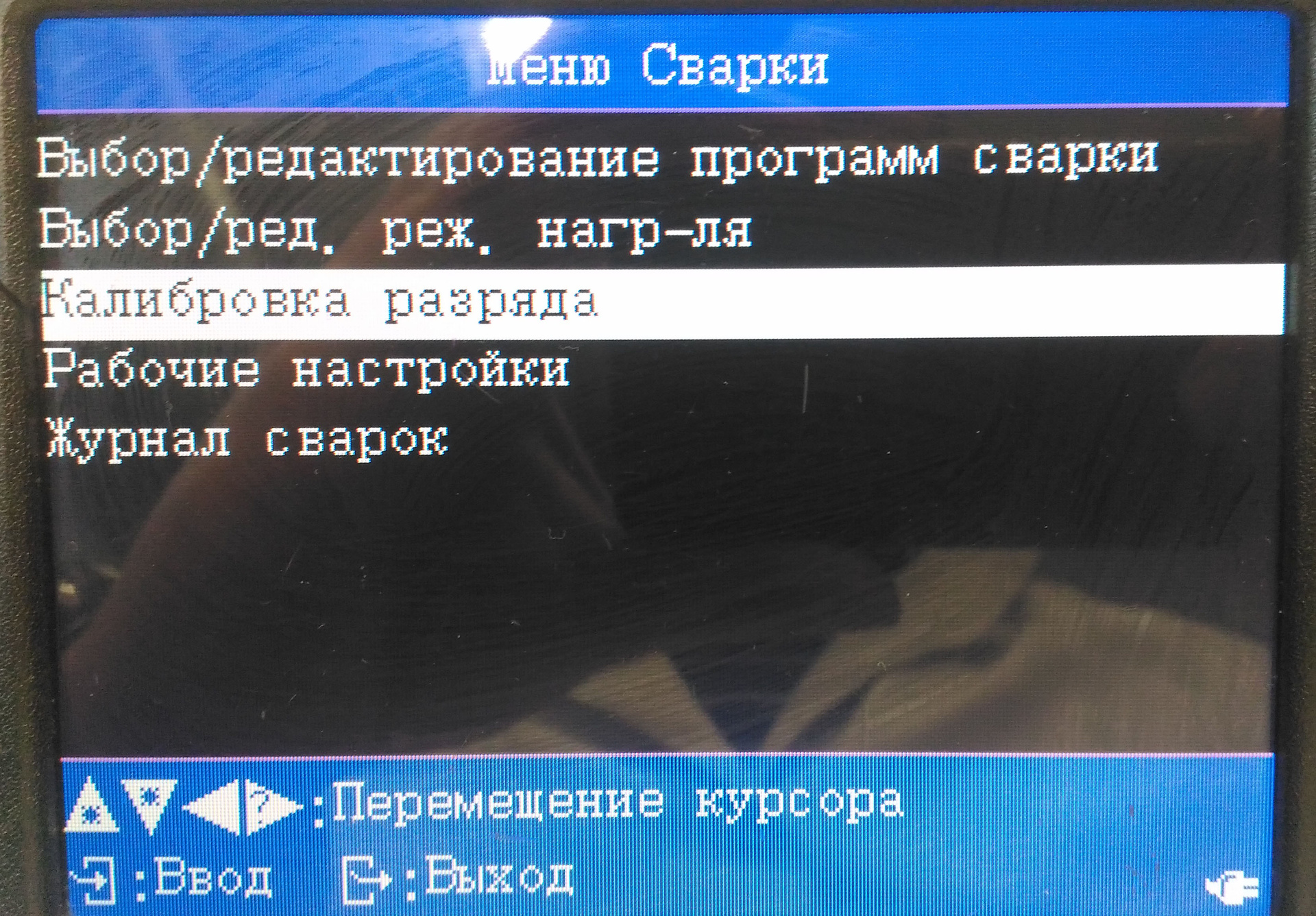
The calibration of these parameters is carried out automatically. After the device completes the calibration - we receive a message that the process was successful.

After setting the parameters of the arc, a comprehensive check of the welding machine and diagnostics of the welding quality is carried out. Next, using a reflectometer, measurements of the attenuation level at the weld are performed using the stand.
After a detailed analysis of the results of maintenance, the device passes the testing stage, during which it confirms the serviceability of the equipment and its suitability for working in real conditions.
All Articles